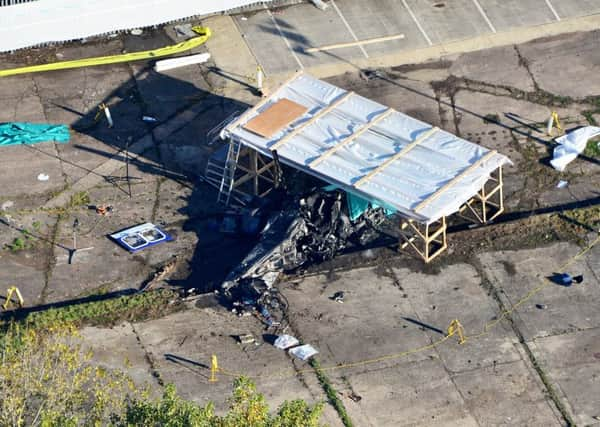Leicester City helicopter crash: Investigators reveal cause of fatal disaster


Club boss Vichai Srivaddhanaprabha, 60, and four others were killed in the crash outside the King Power Stadium following a game against West Ham.
The billionaire died along with his assistants Kavenporn Punpare and Nusara Suknamai, 33.
Advertisement
Hide AdAdvertisement
Hide AdPilot Eric Swaffer, 53, and his girlfriend Izabela Roza Lechowicz, 46, were also killed in the crash just seconds after take off at 7.37pm on October 27.
The Air Accidents Investigation Branch (AAIB) found the AgustaWestland AW169 spiralled out of control when a pedal controlling the tail rotor became disconnected.
Today’s report said: “The tail rotor system was first inspected at the crash site.
“This identified that the input lever mechanism was not attached to the control shaft.
“The pin, spacers and one of the locating bearings were missing from the lever.
“The locking nut and pin carrier were found loose in the tail rotor fairing and were
bonded together (they should be separate components).”
The eight-page report concluded the failure of the rotor caused the helicopter to violently veer to the right which led to it crashing in a fireball.
The report said: “Loss of the feedback mechanism rendered the yaw stops ineffective, allowing the tail rotor to continue changing the pitch of the tail rotor blades until they reached the physical limit of their travel.
“This resulted in an uncontrollable right yaw.
Advertisement
Hide AdAdvertisement
Hide Ad“Whilst the shaft was rotating and a yaw control input was applied, the shaft ‘unscrewed’ from the nut, disconnecting the shaft from the actuator lever mechanism, and causing the nut to become welded to the pin carrier.”
The report also recommended five safety requirements be made to all AW169 helicopters to prevent future tragedies.
